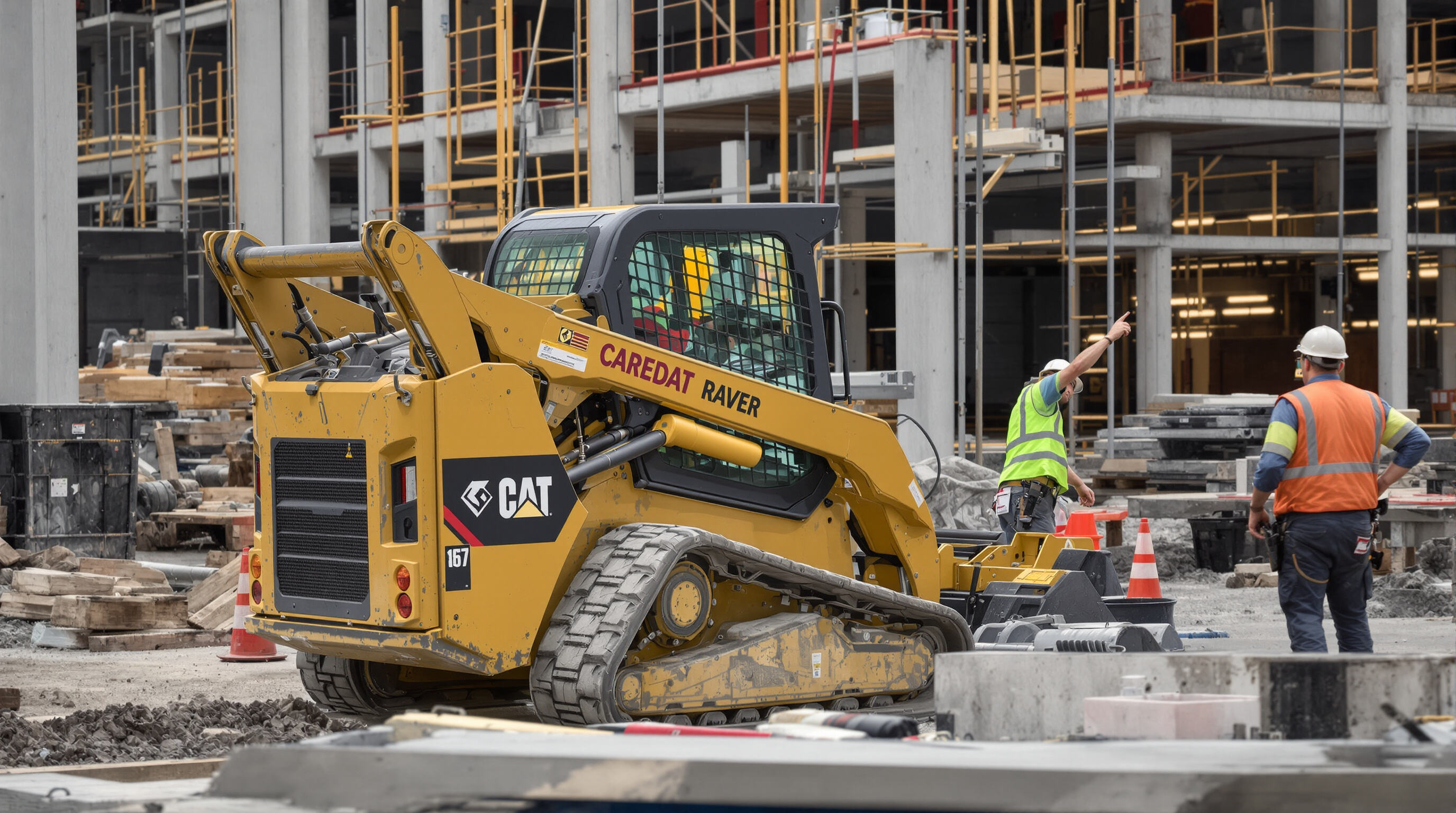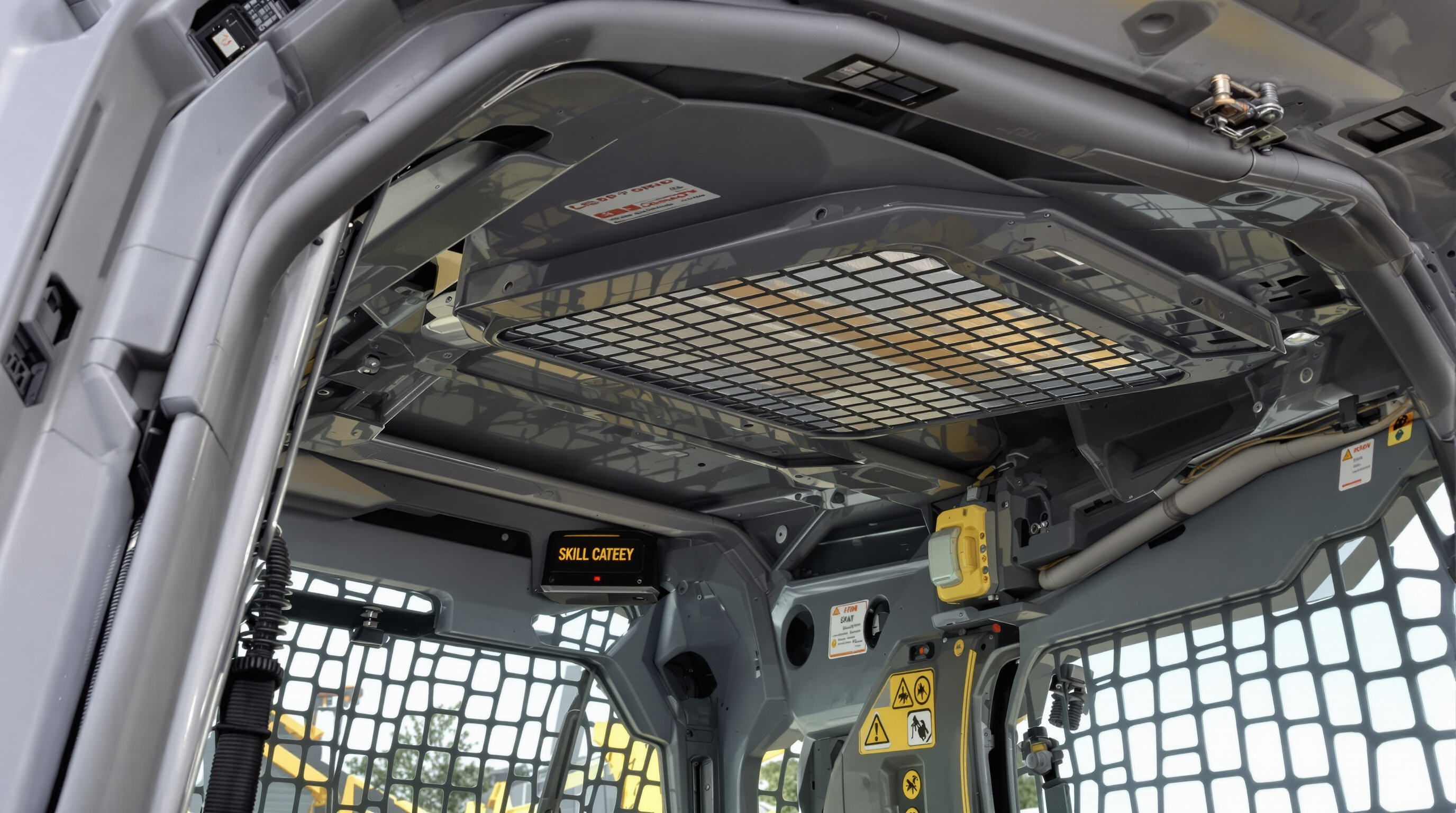Skid steeri idarə etmək üçün hansı təhlükəsizlik ləvazimatları lazımdır?
Skid Steer İstismar Təhlükələrini Anlamaq

Skid steer işləri zamanı sıxışdırma təhlükələri
Kiçik ölçüləri səbəbiylə, skid steers maşınlarında ciddi qəzaların baş verə biləcək bir çox sıxılma nöqtələri var. 2022-ci il üçün NIOSH verilənlərinə görə, bu maşınlarla bağlı hər dörd ölümün biri onların bir yerində ezilmədən qaynaqlanır. Təmir işləri zamanı operatorlar tez-tez hidravlik hissələrə düşür və ya qaldırıcı qollarla əsas çərçivə arasına sıxışır. Yaxınlıqda duran şəxslər də arxa hissəyə diqqət etməlidir, çünki oradakı fırlanma nöqtəsi anidən istiqamətini dəyişir və gözlənilmədən işçiləri təhlükəyə düşürə bilər.
Skid steers maşınları ilə bağlı hadisələr üzrə sənaye məlumatları
OSHA-ya görə, tikinti avadanlıqları ilə bağlı bütün ölüm hallarının 15%-i skid steers maşınlarına daxildir və araşdırmaların 62%-də düzgün təhlükəsizlik protokollarının tətbiq edilməməsi qeyd edilib (2023-cü il məlumatları). Construction Safety Alliance tədqiqatı göstərir ki, ROPS sistemlərindən və oturacaq kəmərlərinin istifadəsinin tələb olunduğu iş sahələrində kritik yaralanmalar digər iş sahələrinə nisbətən 60% az olur.
Dönməyən operatorlar üçün vacib şəxsi müdafiə vasitələri (PPE)
Başın Qorunması: Qutular və Təsirə Müqavimət
ANSI tərəfindən təsdiqlənmiş qutular, düşən alətlərə, yığılmalara və ya aşağı asılmış avadanlıqlara məruz qalan operatorlar üçün müzakirəsiz qorunma təmin edir. Müasir modellər isə şokudurucu asma sistemləri və UV-yaşıllıqdan qoruyan qabları inteqrasiya edir və bu da konkussiya riskini əsas modellərlə müqayisədə 25% azaldır (OSHA 2023). Material yükləmə işləri zamanı yan təsirlərdən qorunmaq üçün kənarları tam olan II növ qutuları üstün tutun.
Yüksək səsli mühitdə Eşitmə Qorunması
Skid steere görə işləmə zamanı səs səviyyəsi tez-tez 85 desibelin üstünə çıxır ki, bu da OSHA standartıdır və işçilər qulaqlarını mühafizə etməyə başlamalıdır. Operatorlar təxminən 33 dB qədər səsi azaldan köpük qulaq tıxacları taxdıqları kimi eyni zamanda təxminən 27 dB səsi bloklayan qulaqüstlük də taxdıqları zaman xüsusilə bütün gün ərzində işlədikdə uzun müddətli eşitmə zədələnmələrinin qarşısının alınmasına həqiqətən kömək edir. Eşitmə qabiliyyəti üzrə aparılan bəzi testlərə əsasən yalnız bir növ mühafizə vasitəsindən istifadə edənlərlə müqayisədə bu ikiqat mühafizə üsulundan istifadə edənlərin eşitmə həssaslığında təxminən 72 faiz daha az dəyişiklik baş verir. Bu məlumat 2022-ci ildə NIOSH tərəfindən dərc edilmiş tədqiqata əsaslanır və bu işçilərin gündəlik təsirlənən səs səviyyəsinin nə qədər yüksək olduğunu düşünəndə məntiqli görünür.
Ləğəm və üzün hissəciklərdən mühafizəsi
Dolayı yolla havalandırma olan polikarbonat gözlüklər qiymətləndirmə və ya sökülmə işləri zamanı hava ilə daşınan hissəciklərin səbəb olduğu kornea abrazyonlarının 94%-ni qarşısını alır. Tam üz ekranları, grabl qurğuları ilə işləmək və ya bitki örtüyünü doğramaq kimi hallarda kritik qoruma təmin edir - bu kimi hallarda ANSI Z87.1 standartına uyğun avadanlıqlar üzün yüzlük dəliklərini 63% azaldır (BLS Yaralanma Siyahısı 2024).
Yüksək Görünüşlü Geyim və Uyğun Ayaqqabı
İşçilər tozun içində işləyərkən və ya zəif işıqlandırma şəraitində görünə bilmələri üçün ANSI 107 standartlarına uyğun geyim geyiməlidirlər. Təhlükəsizlik ekipmanı toplayarkən elektrik təhlükələrinə qarşı müdafiə edən EH qiymətləndirilmiş botlara da diqqət yetirin. 2500 funt təzyiqə dözən möhkəm polad burun hissələrinə, ən azı 0,40 qiymətləndirilməsi olan sürüşməyə davamlı tabanlara və bir şey düşə biləcəyi hallarda əlavə qoruyuculara malik olanları seçin. Ötən ilin Workplace Safety Monitor məlumatlarına görə, bu cür ekipman skid steerlərdə baş verən ayaq nahiyəsindəki sıxılma yaralanmalarının təxminən 58 faizini qədər dayandırır. Bu səbəbdən şirkətlərin indi işçiləri üçün bu kombinasiyaları prioritet hesab etməsi başa düşüləndir.
Daxili Təhlükəsizlik Sistemləri: ROPS, FOPS və Təkərliyər

Qəltərməyə Qarşı Müdafiə Sistemi (ROPS) Effektivliyi və Uyğunluğu
Müasir döner qazanlarda rollover zamanı ezilməni qarşısını almaq üçün möhkəmlənmiş polad konstruksiyalar olan ROPS (Enkazdan Qoruyan Sistem) istifadə olunur. OSHA tələb edir ki, ROPS maşının çəkisinin 2,5 qatına dayanıqlı olsun və şaquli və yan yüklərə test edilsin. Tələblərə riayət məcburidir: NIOSH analizinə görə 2018-2023-cü illərdə baş vermiş ölümlər nəticəsində qəzaya uğrayan əməliyyatçıların 91%-də ROPS standartlarına cavab verən avadanlıq yox idi.
Yuxarıdan Enkazdan Qoruyan Konstruksiya (FOPS) Standartları
Yuxarıdan Enkazdan Qoruyan Konstruksiyalar (FOPS) operatorları enkazdan təsirədavamlı tavan qoruyucusu ilə qoruyur. ANSI/ISO iki qorunma səviyyəsi tələb edir: Səviyyə 1 FOPS kiçik alətlərə (1,125 ft-lbs) dözümlüdür, Səviyyə 2 isə böyük daşlara (5,625 ft-lbs) dözümlüdür. Birləşmiş ROPS/FOPS konfiqurasiyaları meşə və tikinti sektorlarında baş travması riskini 73% azaldır.
Döner qazan təhlükəsizliyində kəmərlərin kritik rolu
Quraşdırılmış təhlükəsizlik dəyirmanı (ROPS) zonasında sabitləşməmiş vəziyyətdə isə, kəmərlər operatoru bu zonada saxlayır. Kəmər taxmayan operatorların devrilmə zamanı maşından atılma ehtimalı 8 dəfə çoxdur. Testlər göstərir ki, hətta 16 km/saat (10 MPH) sürətlə baş verən devrilənlərdə belə 1360 kq-dan (3000 lbs) artıq güc yaranır — bu da insanın özünü tutub möhkəmlənməsi üçün çoxdan artıqdır.
İşdən Əvvəl Yoxlama və Təhlükəsizlik Tələblərinə Uyğunluq
ROPS, FOPS və Oturacaq Kəmərləri üçün Yoxlama Siyahısı
Skid steer loader ilə işə başlamazdan əvvəl operatorların hər iki tədqiqat nöqtələri olan ROPS (qəlpələmədən qoruyan konstruksiya) və FOPS (təsadüfi düşən cisimlərdən qoruyan sistem) üzrə standart 12 balldan ibarət təhlükəsizlik yoxlamasını keçməli. ROPS konstruksiyasında çatlar və zədələnmiş yerləri diqqətlə yoxlayın. FOPS torunun bütövlüyünü və düzgün möhkəmlənməsini, həmçinin hərəkətsizliyini yoxlayın. Oturacaq kəmərlərini sınamayı unutmayın – onları çəkin və geri çəkilmələrini yoxlayın, sonra maşına birləşən hissələri yoxlamaq üçün nəzərdən keçirin. 2023-cü il üçün OSHA-dan son sənaye məlumatlarına əsasən, təhlükəsizlik pozuntularının təxminən üçdə ikisi qoruyucu sistemlərin nasaz işləməsindən qaynaqlanır. Buna görə də bu gündəlik yoxlamalar yalnız yaxşı təcrübə deyil, həm də işçilərin təhlükəsizliyini təmin etmək və müvafiq qaydalara riayət etmək üçün vacibdir.
Qüsuratların sənədləşdirilməsi və təhlükəli şəraitin bildirilməsi
Keçən il Milli Təhlükəsizlik Şurasına görə, bütün skid steers qəzalarının təxminən 41%-i düzəldilməmiş hidravlik sızıntıları və ya bir şəkildə zədələnmiş konstruktiv hissələri səbəbilə baş verir. Operatorlar problemi aşkar etdikdə, vaxt damğası ilə təchizatlı rəsmi nasazlıq hesabatlarını doldurmalı, ROPS çərçivəsindəki çatlamalar kimi ciddi problemləri dərhal rəisinə bildirməli və təmir edilməsi lazım olan avadanlığın heç kimin onu işlətməməsi üçün düzgün şəkildə nişanlanması təmin olunmalıdır. Hər hansı bir qəza nəticəsində hər kəs xəstəxanaya düşərsə və ya normal iş vəzifələrini yerinə yetirə bilməzsə, hadisələri 24 saat ərzində sənədləşdirmək barədə OSHA qaydası da mövcuddur. Bu prosedurlar sadəcə kağız işi tələbləri deyil, həm də sahədə hər kəsin təhlükəsizliyini artırmağa kömək edir.
Skid Steer Operatorlarının Təhlükəsizliyi üçün OSHA və ANSI Tövsiyələri
OSHA 1926.604(c)(3) ROPS\FOPS ilə təchiz edilmiş vahidlər üçün işlək oturacaq kəmərlərini tələb edir, ANSI B126.5-2021 isə qoruyucu konstruksiyalar üçün minimum dizayn yükünü müəyyən edir. Bu standartlar birlikdə tam tətbiq olunduqda ölümcül skid steernin qeyri-işləmə hadisələrini 68% azaldır (Equipment Manufacturers Institute 2023). Təlim proqramları təhlükələrin aşkarlanması və hesabat protokolları üzrə 29 CFR 1926.20(b)(4) tələblərinə uyğun olmalıdır.
SSS
Skid steer istifadəsində yayılmış operativ təhlükələr nələrdir?
Yaygın təhlükələrə sıxılma halları, devrilmələr, aşırlar və düşən detallar və ya düzgün tarazlanmamış yüklər səbəbiylə yaranan zədələnmələr daxildir.
Skid steerdə ROPS və FOPS nə dərəcədə effektivdir?
ROPS və FOPS qəza riskini əhəmiyyətli dərəcədə azaldır, burada ROPS aşırlardan qoruyur, FOPS isə düşən obyektlərdən müdafiəni təmin edir. Birlikdə istifadəsi zədələnmə və ölüm hallarının sayını xeyli azaldır.
Niyə skid steer operatorları üçün FİV-in rolu vacibdir?
Qasırılmaqdan qoruyan vasitələr (PPE) kimi şlyapalar, eşitmə qoruyucuları və yüksək görünən geyimlər düşən qırıntılar, güclü səs-küy və görünənlik problemlərinə qarşı təhlükəsizlik üçün vacibdir.
İşə başlamazdan əvvəl yoxlama siyahısında nələr olmalıdır?
ROPS və FOPS vəziyyətinin, oturacaq kəmərinin iş prinsipinin və konstruksiya zədələnmələri və ya hidravlik sızma hallarının yoxlanması daxil olmalıdır. Təhlükəsizlik tələblərinə cavab vermək üçün bütün nasazlıqların bildirilməsi vacibdir.

